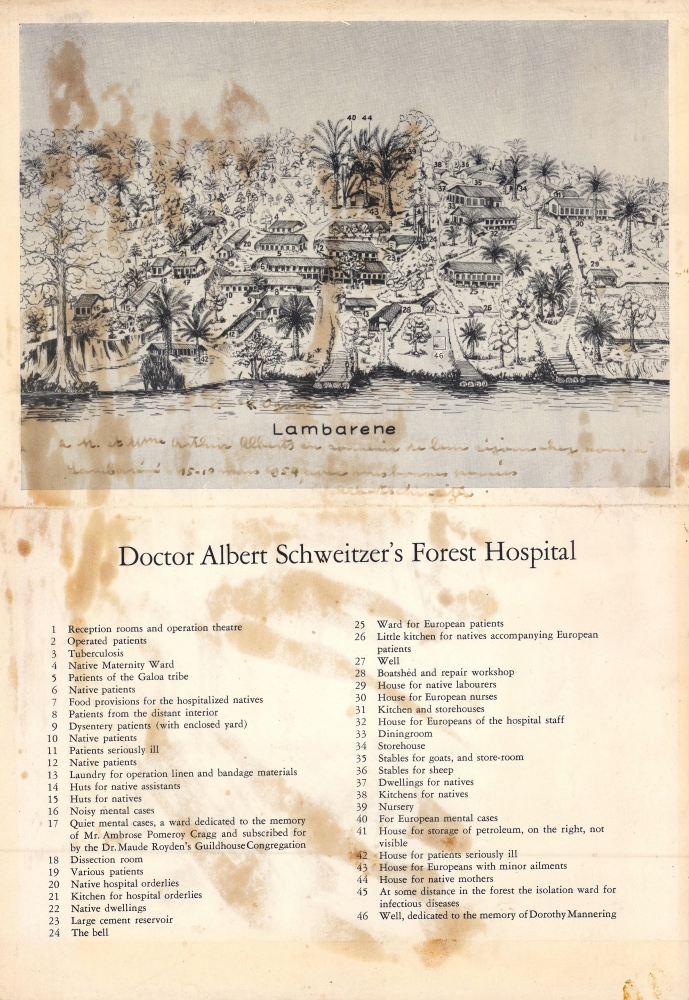1954 Autographed Plan of Dr. Albert Schweitzer's Compound, Lambarene, Gabon
LambareneSchweitzer-unknown-1954$950.00

Title
Lambarene, Doctor Albert Schweitzer's Forest Hospital.
1954 (undated) 10.75 x 7.5 in (27.305 x 19.05 cm)
1954 (undated) 10.75 x 7.5 in (27.305 x 19.05 cm)
Description
Signed by the good doctor himself, this is a plan of Dr. Albert Schweitzer's hospital at Lambaréné on the Ogooué River in western Gabon. Schweitzer established the hospital in 1913 and would spend much of the next fifty-two years of his life at the compound.
Facing overwhelming demand and working with limited resources, Schweitzer attended to a variety of injuries and diseases of the local population. The initial nucleus of buildings was expanded upon repeatedly to attain the compound seen here. Though the hospital went through periods of relative decline, especially when Schweitzer was away or too elderly to effectively administer it, it pioneered several treatments and introduced recent medical advances to Africa. In many ways, Schweitzer presaged the foreign aid, medical missionary work, and philanthropic efforts common in the postcolonial period.
A Closer Look
Albert Schweitzer was a polymath physician, musician, philosopher, and theologian whose long life spanned from the high point of colonialism in the early 20th century through to the age of decolonization in the Cold War. By age 30, Schweitzer was already an accomplished pianist and organist, and a promising young Christian theologian. But to the surprise of his friends and family, he began to study medicine in 1905 with the aim of undertaking medical missionary work abroad. In 1912, he and his wife, Helene Bresslau Schweitzer, arrived in French Equatorial Africa and raised money to establish a hospital along the Ogooué River that became known as the Hôpital Albert Schweitzer.Facing overwhelming demand and working with limited resources, Schweitzer attended to a variety of injuries and diseases of the local population. The initial nucleus of buildings was expanded upon repeatedly to attain the compound seen here. Though the hospital went through periods of relative decline, especially when Schweitzer was away or too elderly to effectively administer it, it pioneered several treatments and introduced recent medical advances to Africa. In many ways, Schweitzer presaged the foreign aid, medical missionary work, and philanthropic efforts common in the postcolonial period.
Publication History and Census
The origins and authorship of this map are unclear. Several books written by and about Schweitzer were published in the early-mid 20th century, but this map does not appear to have been included in any of them. Instead, this looks to have been a souvenir handed out to visitors to the hospital, an interpretation strongly supported by the faint but still legible handwriting at the bottom of the view:A M. et Mme. Arthur Alberts en souvenir de leur séjour chez nous à Lambaréné, 15-18 Mars 1954, avec mes bonnes pensées
Albert Schweitzer
Condition
Average. Adhesive remnant on verso that shows through to recto. Some wear along fold line.

